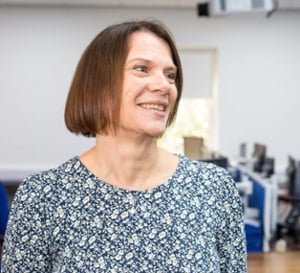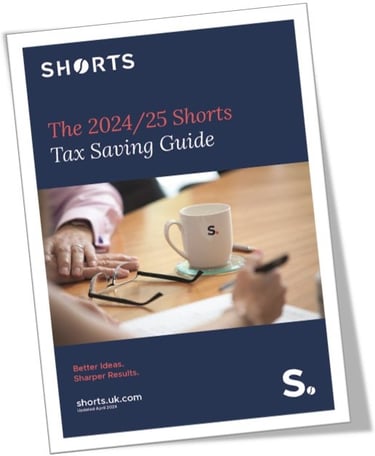
When VAT (Value Added Tax) was first introduced, it was described as a ‘simple tax’ but, in the last 50 years, it has become increasingly more complicated. Over the years, VAT rates have changed, and the VAT treatment of goods and services has changed and evolved.
As a result, there is no short answer to how VAT is calculated. Calculations are dependent on numerous factors including:
- The VAT rate
- What is being supplied
- The customer
- The supplier
- Whether goods are new or second-hand
Whether you are running a business or purchasing goods or services as a consumer it is important to understand how VAT is calculated and how it affects you.
How VAT works
VAT is a tax added to most goods and services sold in the UK by VAT-registered businesses. It is usually paid by the end consumer when the goods or services are purchased.
Businesses must register for VAT with HMRC if their taxable turnover exceeds £90,000 in a 12-month period. If your business has a lower turnover you can choose to register for VAT voluntarily.
Once VAT-registered, a business must charge VAT on goods/services that are subject to VAT at the standard rate (20%) or the reduced rate (5%). A VAT-registered business can reclaim VAT on business purchases (with some exceptions).
VAT is accounted for by completing a monthly or quarterly VAT return. The VAT charged is offset against VAT paid on business expenses and the net amount paid to HMRC. If VAT on expenditure exceeds VAT charged on sales, HMRC will make a repayment to the business.
How do I calculate VAT?
The current UK VAT rates are: standard rate, reduced rate and zero rate.
Standard rate
Standard rate (20%) – VAT of 20% is charged on most goods and services. The VAT is calculated by multiplying the net price by 20%. For example, VAT charged on a mobile phone with a net price of £500 is £100 i.e., £500 multiplied by 20% The VAT-inclusive price is £600.
The VAT inclusive price of £600 can be calculated by multiplying £500 by 1.2.
Reduced rate
Reduced rate (5%) – the reduced rate applies to limited goods and services. For example, gas and electricity for domestic use, or children’s car seats, have reduced-rate VAT. The VAT is calculated on the net price by multiplying by 5% and to calculate the VAT element of a VAT inclusive price by multiplying by 1.05.
For example, a child’s car seat with a total price of £85 would have a net price of £80 multiplied by 1.05 to give a total price of £84. The VAT proportion is £4.
Zero rate
Zero rate – no VAT is chargeable on goods and services which are zero-rated. Books are an example of a zero-rated VAT good.
Calculating VAT in specific circumstances
Flat rate scheme
Businesses with a VAT-exclusive turnover of £150,000 or less can apply to HMRC to use the Flat Rate Scheme (FRS). Businesses using the FRS pay a fixed rate of VAT to HMRC. The business then retains the difference between the VAT charged to customers and the VAT paid to HMRC.
VAT on expenditure cannot be reclaimed other than on certain capital asset purchases costing over £2,000.
VAT is calculated by multiplying the total turnover by the flat rate percentage prescribed by HMRC. For example, a restaurant with a quarterly turnover of £150,000 would multiply this figure by 12.5%. The VAT to be paid to HMRC would be £18,750.
Using normal VAT accounting, a business with a turnover of £150,000 would owe VAT of £25,000 to HMRC (although that could be offset against VAT on expenditure).
Second-hand goods
A special scheme (Margin Scheme) is available for businesses selling:
- Second-hand goods
- Works of art
- Antiques
- Collectors’ items
Providing VAT was not charged when the goods were purchased, VAT can be accounted for on the difference between the purchase price and selling price if certain conditions are met.
For example, a car purchased from a private seller for £1,500 is sold for £2,200. The difference between the purchase price and the selling price is £700. The VAT to be accounted for to HMRC is calculated by multiplying £700 by 1/6. VAT of £116.67 is payable to HMRC but this is not shown on the invoice to the customer.
Tour operators
There is also a special scheme which must be used by tour operators buying in and reselling certain travel services, such as:
- Passenger transport
- Hotel accommodation
- Car hire
A tour operator based in the UK only accounts for VAT on the difference between the amount received from customers (including any amounts paid on behalf of a customer by third parties) and the amount paid to suppliers. This is the Margin Scheme supply margin.
A provisional amount of VAT is calculated quarterly with an annual calculation carried out to determine the actual amount of VAT payable to HMRC. The calculations are complex and must be carried out as prescribed in VAT Notice 709/5, Tour Operators’ Margin Scheme.
Where can I find out more?
The VAT treatment of goods and services and how to calculate VAT will be different for every business. It is important to ensure you know how VAT applies to your business and what your VAT obligations are.
You can find more information in our VAT guide.

Lynne Gill
My area of expertise is land and property transactions but I have extensive knowledge of both domestic and international VAT and I love complex VAT queries. I have an Honours degree in Business Studies and a VAT legal and technical qualification from the Institute of Indirect Taxation.
View my articlesTags: VAT, VAT compliance


